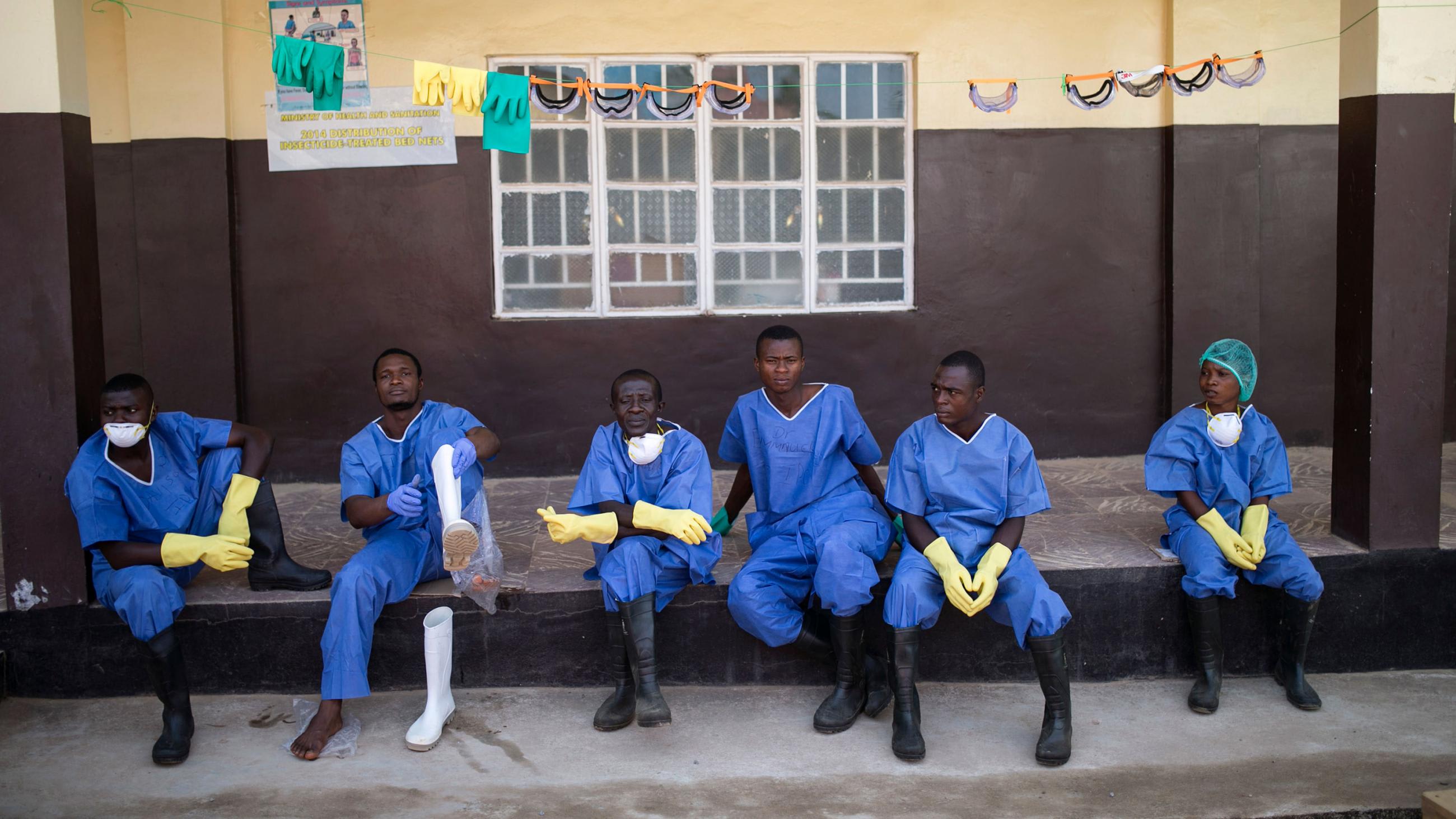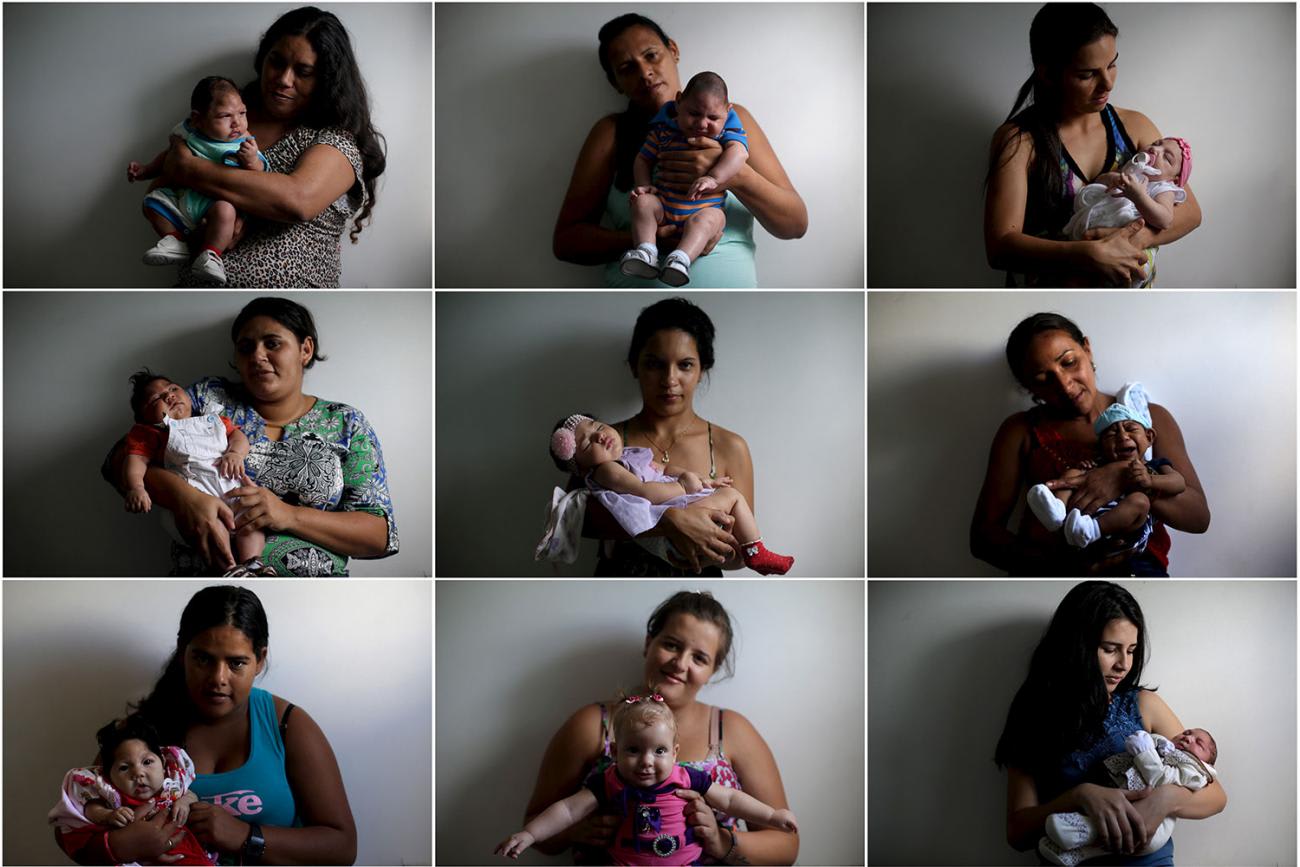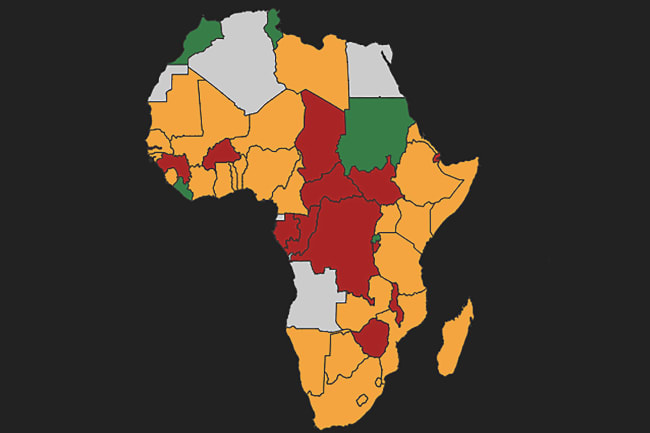Over recent years, the world has faced two Ebola outbreaks, the constant threat of pandemic influenza, and now the global spread of novel coronavirus and the COVID-19 pandemic. In developing countries, these threats risk exacerbating existing high burdens of communicable diseases associated with millions of preventable deaths. Community health is essential for pandemic preparedness (prevention, surveillance, response) and remains essential for achieving the World Health Organization's Sustainable Development Goals. The global scale and impact of the current pandemic demonstrates that this cuts across geographies, levels of income, and types of health systems.
The 2014–2016 Ebola epidemic in West Africa caused 11,310 deaths and was estimated to cost more than $2.8 billion
One sign that community health approaches work is on display in Central Africa, which is currently emerging from its most recent Ebola outbreak. On March 3, the last person infected with Ebola was discharged from a health facility in the Democratic Republic of Congo. The nineteen-month long epidemic claimed the lives of 2,264 people. The 2014-2016 Ebola epidemic in West Africa was responsible for 11,310 deaths, with an associated economic cost estimated by the World Bank to be more than $2.8 billion. As of March 17, COVID-19 has claimed the lives of more than 7,000 individuals. Early simulations demonstrate that even in the best-case scenario, it will have a significant economic impact. The majority of cases and deaths to date have been in developed countries with relatively strong health systems and pandemic response mechanisms. If the COVID-19 crisis expands to Africa and other developing countries, which predominantly have sub-optimal health systems and severe health worker shortages, the impact could be harrowing.

Since 2016, our organization the Financing Alliance for Health (FAH) has worked to co-build the community health systems necessary to respond to these pandemic threats and meet the health needs of everyday citizens. It achieves this by partnering with governments and other primary health care organizations to finance and scale effective community health programs. Community health workers, if equipped and empowered, can play a pivotal role to prevent, monitor, and respond to both the current outbreak and future challenges.
Preventing Health Crises
Community health workers play a critical role as community advocates for health promotion, and they are reliable sources of health information. They help to avert the spread of misinformation and dispel myths that can antagonize intervention efforts. As a trusted voice in their communities, they promote hygiene practices such as hand washing, personal hygiene, water and sanitation [PDF] interventions, infection prevention and control, and the reduction of indoor air pollution.
Community health workers help to avert the spread of misinformation and dispel myths that can antagonize intervention efforts
During the 2015 Zika virus outbreak in Brazil, for example, community health workers known as "brigadistas" played a key role in prevention, using a wide variety of approaches. The brigadistas provided important prevention messages to communities at risk prior to the peak of mosquito season and they distributed Zika prevention kits to pregnant women. Their communities, usually characterized by poor sanitation practices, cleared mosquito breeding sites for prevention and increased their use of condoms to avert the sexual transmission. During the height of the outbreak, brigadistas performed community level triage and conducted active case finding, linking people with local primary health care centers.

Monitoring from Within
During both Ebola epidemics, the consequence of weak health systems was that they delayed the recognition of the outbreak. These delays may have resulted in a higher number of cases and fatalities—something that demonstrates how the surveillance capabilities of community health workers are potentially the first line of defense against the spread of pandemic diseases. They are ideally placed to identify and report outbreaks as they happen so that regional, national, and international expertise can respond. Given that a majority of emerging infectious diseases are zoonotic in origin, leveraging the competence of community health workers as social mobilizers could improve surveillance of the communities at risk while providing timely, accurate, and culturally relevant information that leads to successful behavioral change on the part of the public.
In Sub-Saharan Africa alone, community health is underfunded by an estimated $2 billion every year
In Sierra Leone, one of the countries severely hit by the Ebola outbreak in 2015, community health surveillance by the community health workers was critical in containing the epidemic. Following a missed diagnosis and unsafe funeral in a village in the Kono district, community health workers sprang to action to conduct contact tracing and community education. Their efforts quickly identified and sequestered suspected new cases, thus preventing further spread of the disease. In Nigeria, community health workers trained to support the national polio eradication program were enlisted to support contact tracing after a person with Ebola arrived in Lagos. Their efforts effectively prevented further widespread community transmission.
Responding as a Community
Community health workers routinely provide first-line therapy for a wide variety of diseases, and link rural, last mile areas with local primary care facilities and regional specialist level resources. In many cases, this can prevent prolonged, sometimes unnecessary transport and other delays in care. In the midst of pandemic disease outbreaks, formal health care systems are often overwhelmed. Community health workers can be leveraged as a public health reserve during these emergencies. Their work in responding to pandemic outbreaks can be focused on community mobilization, active case finding, and filling health service gaps. Rwanda, for example, has directed people with symptoms suspicious for COVID-19 to consult with local [PDF] community health workers for screening and referral.

Building Upon This Foundation
Community health workers play a vital role in preventing, monitoring, and responding to pandemic threats. It is therefore critical that we accelerate investments in community health in our response to the COVID-19 pandemic.
The case for investing to close this gap is compelling, considering the significant human and economic costs of pandemics
In Sub-Saharan Africa alone, community health is underfunded by an estimated $2 billion every year. The case for investing to close this gap is compelling, considering the significant human and economic costs of pandemics. Early estimates indicate that the coronavirus pandemic could cost the global economy $2 trillion. The Financing Alliance for Health, has to date supported twelve governments, mobilizing more than $30 million towards community health, and continues to work to close the funding gap. These efforts will help partner governments respond to the challenges of today, like COVID-19, and the communicable and non-communicable disease challenges of the future.












